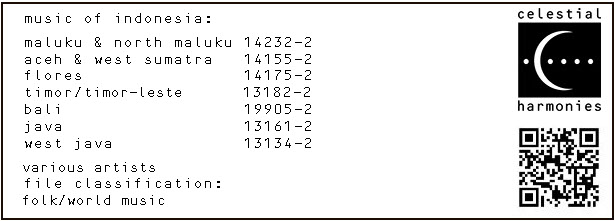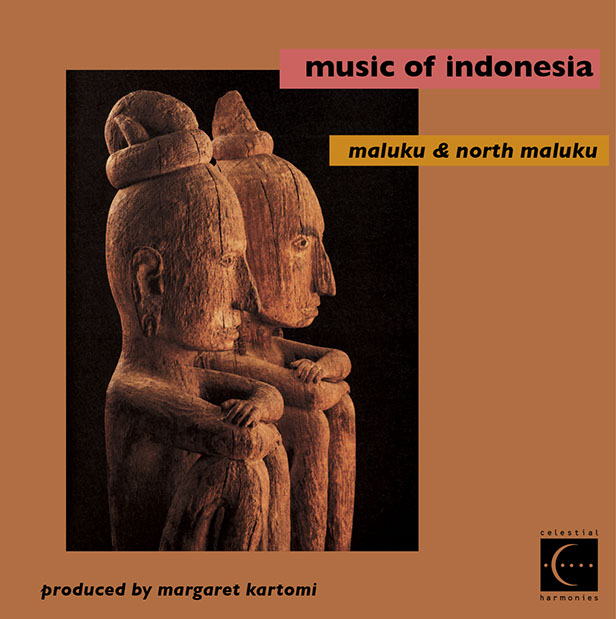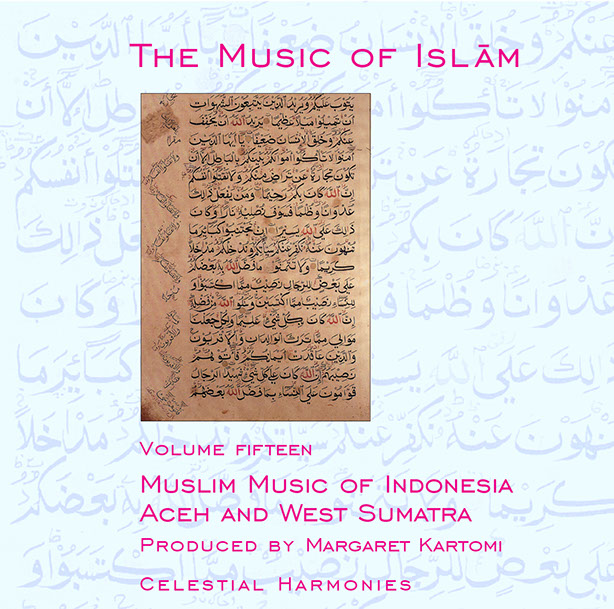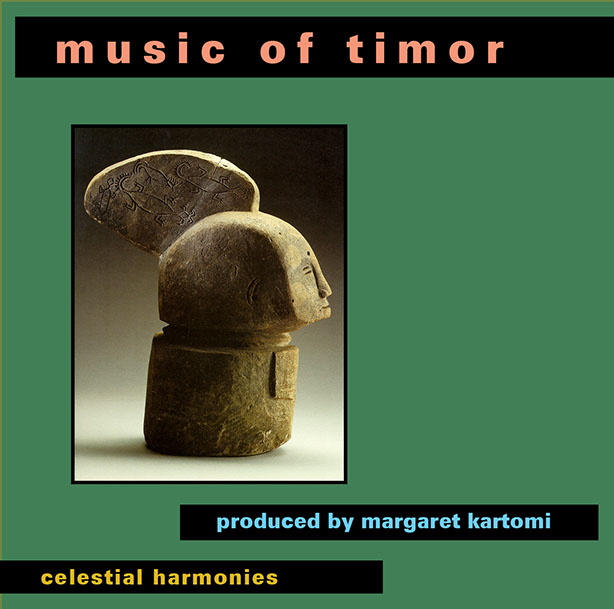

the project
Indonesia has the fourth largest population on earth, approaching 200 million. It is also the largest Muslim country although Christianity, Buddhism and Hinduism are present as well, albeit in minorities.
Celestial Harmonies has commenced a series of recordings which eventually will feature music from all of Indonesia’s 26 provinces, as well as from the island of Timor, now divided into Timor and independent East Timor.
The province of Maluku is extremely beautiful, consisting of the former Spice Islands and many thousands of atolls and other islands dotting the sea, which makes up most of its area. In the 15th century the Portuguese named it Maluco (where ma means “who owns” and loko means “world”) and in the plural form, the Moluccas—a name that is maintained to this day.
At their closest point, Indonesia is about as far away from Australia as Cuba is from the United States, but there are worlds between the neighbours. Whilst the sounds from Bali and Java are quite well-known, in the west, the traditional music from the lesser known provinces has been a well-kept secret to most.
In 2001, the former province of Maluku was divided into two: North Maluku and Maluku (comprising the southern half of the former province). The province of Maluku contains many diverse musical cultures, each based on a unique, creative synthesis of local traditions and outside influences. Many musical forms are linked to religious practices, including the church music-influenced styles of the Christians, the Middle East-influenced musical expressions of the Muslims and the music associated with ancestor and nature spirit-based religious beliefs. Whereas North Maluku is predominantly Muslim, Maluku (i.e. central and south) is mainly Christian. Islam came to central Maluku from the 15th century and there are many small Muslim pockets throughout the central and southeast pockets of the province. With the arrival of the Portuguese in 1512, however, the non-Muslim population was converted to Catholicism and began to practice Portuguese Catholic church music. Catholic church music remained influential long after the Dutch took over in 1605, though Ambon and other areas heavily influenced by Dutch culture, most of the people were then converted to Protestanism. Hence, most of Maluku’s Christian population is Protestant, but there is also a substantial number of Catholics, especially in Kei and Tanimbar. However, the mainstream performing arts are based primarily on indigenous beliefs, i.e. those based on the veneration of the ancestors and spirits of nature.
Malukan folksongs and international popular songs are en vogue today in the media and at celebrations.
the producer
Margaret Kartomi AM FAHA Dr Phil is Professor of Music at Monash University, an ethno-musicologist specialising on Indonesia and Southeast Asia, and the world authority on the music of Sumatra.
A graduate of the University of Adelaide, Margaret undertook studies for her doctorate in musicology at the Humboldt University in Berlin before taking up a research fellowship at Monash in 1969, a lectureship in 1970, promotion to reader in 1976, and professor in 1989. From the early 1970s she pioneered the teaching and research of Asian music in Australia and established Monash University’s Sumatra Music Archive, Asian Music Archive, and the Australian Archive of Jewish Music. During her time as Head of School (between 1989-1998 and 2000-2001), she developed a new philosophy of education, directed the expansion of the University’s music program to include performance and composition as well as ethnomusicology and musicology, and instituted several degrees and double degrees.
Margaret is the author of over 100 refereed articles/book chapters, five books and six ethnographic, commercially released vinyl records or Compact Discs. She also served as editor of six books and contributed hundreds of entries in standard reference works. Her publications cover organological, historical, music-analytical and other aspects of the music-cultures of Sumatra, Java, Kalimantan, Maluku, Flores, Chinese Indonesia, Baghdadi-Jewish music in Asia and Australia, and Australian Pitjantjara Aborigines. In the past decade she won $3.5 million in competitive research grants from the Australian Research Council. She is on the editorial boards of the Chicago Studies in Ethnomusicology monograph series and the Music, Dance and Theatre Iconography series of the Hollitzer Wissenschaftsverlag, and on journals such as Ethnomusicology Forum and the Journal of Musicological Research.
Elected a Fellow of the Australian Academy of the Humanities in 1989 and made a Member of the Order of Australia (AM) for services to ethnomusicology in 1991, she was then awarded a Centenary Medal by the Federal Government of Australia for service to Australian society and the humanities in 2003. Margaret was elected a Corresponding Member of the American Musicological Society in 2004, and received an Order from the government of Lampung for her Sumatra research in 2011. She is also a Council member of the Society for Ethnomusicology and was the program convenor for its conference in Columbus, Ohio in 2007. She also convened Symposia of the International Musicological Society in Melbourne in 1988 and 2004, with another mooted for 2017.
Margaret is a versatile scholar who oversees the direction of research in the School of Music – Conservatorium in her role as Research Coordinator. Currently her field research focuses on the music-cultures of Aceh, the Riau Archipelago and Lampung provinces of Sumatra, and she continues to supervise dissertations by research students.






